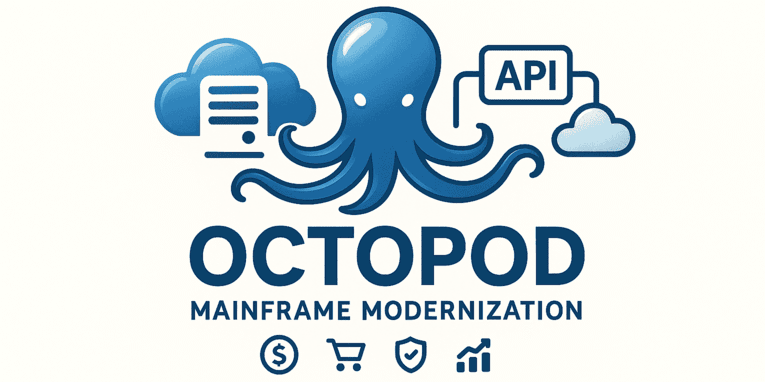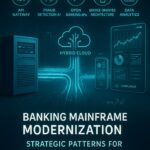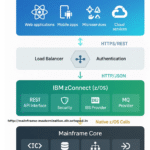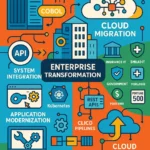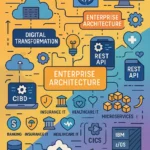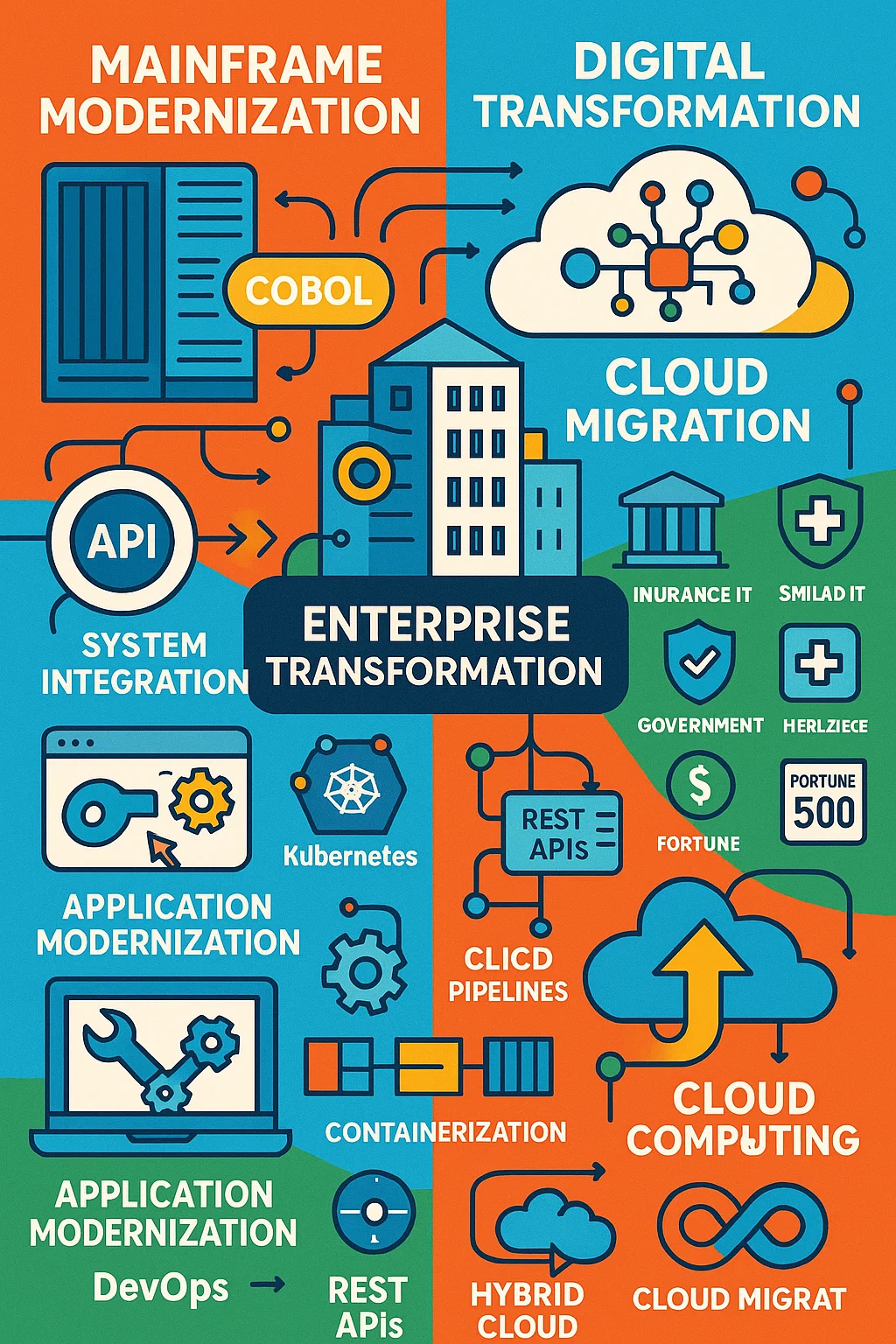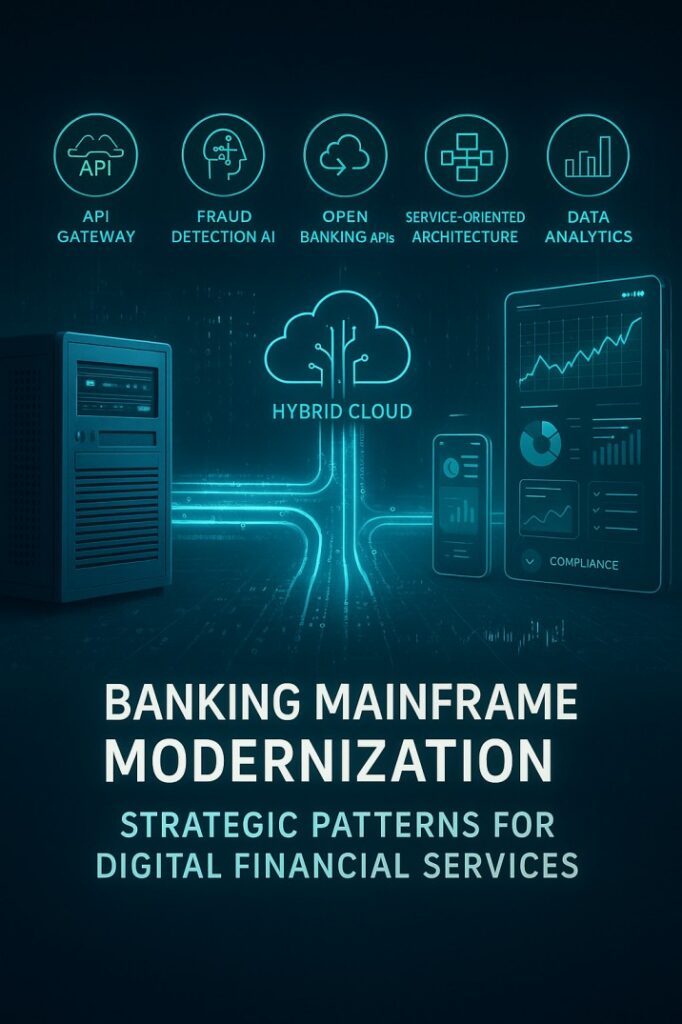You checked your bank balance this morning. Booked a flight for next month. Maybe filed your taxes or paid a bill online. Every single one of those actions was powered by technology that’s older than your parents—yet more advanced than anything in your smartphone.
Welcome to the hidden world of mainframe computers: the digital workhorses processing billions of transactions every day while remaining completely invisible to the people whose lives they run.
The Computer That Never Left
While everyone was obsessing over the latest iPhone or arguing about cloud versus on-premise, mainframes quietly became the most successful technology story nobody talks about. These aren’t your grandfather’s room-sized monsters from the 1960s—they’re sleek, energy-efficient powerhouses that make AWS look like amateur hour.
Here’s the kicker: 87% of all credit card transactions run through mainframes. That contactless payment you just made? Mainframe. Your Uber ride? The payment processing hits a mainframe. Your Netflix subscription? You guessed it.
But here’s what’ll blow your mind—these “ancient” systems are running the most cutting-edge technology you can imagine.
Plot Twist: Mainframes Are Actually More Modern Than Your Laptop
Think mainframes are stuck in the past? Think again.
They’re running AI directly in the processor—and now they’ve completely reimagined it. IBM’s brand-new z17 mainframe, powered by the revolutionary Telum II processor running at 5.5GHz, represents the most significant leap in mainframe AI capabilities ever achieved. This second-generation on-chip AI accelerator can handle over 450 billion AI inference operations per day with single-digit millisecond response times—that’s 7.5x more AI throughput than the z16.
But here’s where it gets insane: IBM also introduced the Spyre AI Accelerator, a 26-billion transistor processor with 32 AI cores and 128GB of memory that plugs directly into the mainframe via PCIe. You can install up to 48 Spyre cards in a single z17 system, creating an AI powerhouse that makes dedicated AI servers look quaint. While your company is debating cloud vs. on-premise for AI workloads, banks are running generative AI and large language models directly on transaction data without moving a single byte off the mainframe.
They’re running Kubernetes better than most cloud platforms. IBM’s latest mainframes can run thousands of Linux containers simultaneously through z/OS Container Extensions and OpenShift integration, making them essentially private cloud platforms that never crash. Yes, the same container orchestration that startups brag about using? Mainframes were there first.
CICS is seamlessly integrating with AWS and Azure. IBM CICS Transaction Server now connects directly to cloud platforms through hybrid architectures, with CICS TX enabling workloads to run on AWS while maintaining integration with core z/OS systems. Your “legacy” transaction processing system is now powering cloud-native applications.
They’re more cloud-native than most cloud applications. The virtualization, service-oriented architecture, and multi-tenancy that defines modern cloud computing? Mainframes invented all of that in the 1960s. They were doing “cloud computing” before the internet existed.
The Database Revolution Hiding in Plain Sight
Here’s where it gets really fascinating. The databases everyone calls “legacy” are actually powering the most cutting-edge applications you use daily.
DB2 is fueling AI and machine learning at scale. IBM Db2 for z/OS now includes SQL Data Insights with embedded word embedding techniques that can find hidden patterns in structured data using semantic similarity searches. The same database that’s been running your bank for 40 years is now performing AI operations that would make a data scientist jealous—directly on transactional data, in real-time, with enterprise-grade security.
IMS: The “Dead” Database That Predicted NoSQL. Everyone jokes about IMS being obsolete, but here’s the plot twist: its hierarchical structure is nearly identical to modern document databases like MongoDB. IMS organizes data in tree-like structures with parent-child relationships—exactly like JSON documents. While developers are discovering the benefits of document stores for handling complex, nested data structures, mainframes have been doing this since 1966. IMS was XML and JSON before XML and JSON existed.
The most successful “modern” database architectures are just rediscovering principles that IMS implemented decades ago: flexible schemas, nested data structures, and direct parent-child relationship navigation.
The Skills Gap That’s Creating Millionaires
Here’s where it gets really interesting. There’s a massive crisis brewing in plain sight, and it’s creating incredible opportunities for anyone smart enough to pay attention.
The mainframe workforce is retiring. Fast. Universities stopped teaching mainframe technologies decades ago, assuming they’d disappear. They didn’t. Now we have a perfect storm: systems that are more critical than ever, handling more transactions than ever, with fewer people who know how to work with them.
COBOL programmers—yes, those “obsolete” programmers everyone jokes about—are commanding premium salaries that would make Silicon Valley developers jealous. Companies are paying six figures just to find people who can read the code that runs their entire business.
But here’s the secret: modern mainframe development looks nothing like what you’d expect. Today’s mainframe developers use the same tools as web developers—modern IDEs, Git, automated testing, continuous integration. They’re applying DevOps practices to systems that process more transactions in an hour than most websites handle in a month.
The Environmental Secret Weapon
Want to talk about sustainability? While tech companies are building massive data centers that consume entire city’s worth of electricity, mainframes are quietly being the most energy-efficient computers on the planet.
A single mainframe can replace hundreds of distributed servers while using a fraction of the power. As companies get serious about carbon footprints, consolidating workloads onto mainframes isn’t just good for reliability—it’s good for the planet.
The Future Is Surprisingly Retro
The technology trends everyone’s excited about? Mainframes are already there—and have been for years.
Quantum computing integration? IBM’s working on hybrid classical-quantum mainframes that could solve problems no other computer can touch. The z17’s quantum-safe cryptography isn’t just future-proofing—it’s preparing for a computing paradigm that doesn’t even exist yet.
Real-time analytics at transaction scale? The z17 processes 24 trillion operations per second—that’s trillion with a T. DB2’s Analytics Accelerator processes queries 100x faster than traditional systems while maintaining full ACID compliance on live transaction data. Your startup’s “innovative” real-time dashboard is processing thousands of events per second. Mainframes process millions while simultaneously running AI models on every single transaction.
Multi-model AI with enterprise data? The z17’s Telum II processor supports both predictive AI and large language models running directly on the same chip that’s processing your bank transactions. Companies can now run generative AI assistants that have real-time access to decades of enterprise data without ever moving that data to external AI platforms.
Edge computing coordination? Mainframes excel at managing massive, distributed networks—exactly what you need to coordinate thousands of edge devices. They’re already the central coordination point for ATM networks spanning continents.
Hybrid cloud data integration? IBM Data Gate synchronizes mainframe data with cloud platforms in real-time, automatically converting from EBCDIC to UTF-8 and handling all the complex data transformations. Your cloud-native applications can query 40-year-old COBOL data through standard REST APIs without knowing the difference.
Regulatory compliance? In an era of GDPR, data breaches, and financial regulations, mainframes’ built-in security and audit capabilities are becoming more valuable, not less.
Digital transformation? Rather than being obstacles to digital transformation, mainframes are becoming the stable foundation that enables it. Companies can experiment with new digital services knowing their core business processes are running on rock-solid mainframe infrastructure.
The Paradox That Changes Everything
Here’s the mind-bending part: mainframes represent both the oldest and newest approaches to computing simultaneously. The centralized, service-oriented architecture they pioneered in the 1960s is exactly what modern cloud platforms are trying to recreate.
While the tech world went through revolution after revolution—PCs, internet, mobile, cloud—mainframes just kept evolving, quietly staying relevant in every era. They’re proof that sometimes the best innovation isn’t disruption, it’s continuous improvement.
The Numbers Don’t Lie (And They’re About to Get Bigger)
Ready for some statistics that’ll reshape how you think about technology infrastructure?
Current z16/z17 Performance:
- 450 billion AI inference operations daily (z17)
- 24 trillion operations per second processing capability
- 71% of Fortune 500 companies depend on them
- 87% of all credit card transactions processed through mainframes
- 80% of the world’s corporate data lives on mainframes
- 99.999999% uptime (that’s “eight nines” – less than 3 seconds of downtime per year)
The z17 specifications that make Silicon Valley jealous:
- 5.5GHz Telum II processors (when most servers run at 3GHz)
- 2.88GB virtual L4 cache per processor
- Up to 48 AI accelerator cards per system with 128GB memory each
- Sub-millisecond AI inference while processing millions of transactions
- 50% improvement in AI performance over the already impressive z16
Your favorite cloud service that crashes for hours and makes headlines? Mainframes have been delivering better reliability for decades.
The Career Opportunity Nobody’s Talking About
While everyone’s rushing to learn the latest JavaScript framework, there’s a massive opportunity in a technology that’s both ancient and futuristic. Companies are:
- Offering premium salaries for mainframe skills (we’re talking 20-50% above market rate)
- Creating internal training programs to teach mainframe technologies to modern developers
- Investing heavily in modernization tools that make mainframe development more accessible
- Partnering with universities to restart mainframe education programs
The smart move? Learning mainframe technologies now, while the opportunity is still hidden from the mainstream.
The Integration Revolution
The coolest part of modern mainframes isn’t the hardware—it’s how they integrate with everything else.
APIs are making 40-year-old COBOL programs callable from JavaScript. API platforms like IBM zConnect let companies expose decades-old business logic as REST APIs that mobile apps can call directly. That customer lookup routine written in 1987? It’s now powering your bank’s mobile app with sub-100ms response times.
Hybrid architectures combine mainframe reliability with cloud flexibility. CICS applications can now trigger AWS Lambda functions. DB2 data flows in real-time to Snowflake for analytics. IMS transactions can publish events to Kafka streams. Companies aren’t choosing between mainframes and modern technology—they’re using mainframes as the rock-solid foundation for modern digital experiences.
DevOps is coming to mainframes. Modern IDEs, Git repositories, automated testing, and CI/CD pipelines now support mainframe development. The same agile practices transforming web development are being applied to systems processing billions of transactions daily.
The Bottom Line: Infrastructure Invisibility
The most successful technology is the technology you never think about. Mainframes have achieved something remarkable: they’ve become so reliable, so efficient, so essential, that they’ve disappeared from public consciousness while becoming more important than ever.
Every time you:
- Swipe your card: Mainframe
- Check your bank balance: Mainframe
- Book a flight: Mainframe
- File your taxes: Mainframe
- Make an insurance claim: Mainframe
The digital infrastructure running modern life isn’t powered by sleek startups with ping pong tables—it’s powered by technology that’s been continuously refined for sixty years.
The Final Plot Twist
In a world obsessed with disruption, mainframes prove that evolution beats revolution. They’re not fighting modern technology—they’re the foundation that makes modern technology possible.
The mainframe revolution isn’t over. It’s just gotten so good at what it does that we forgot it was there. And in a world where reliability, security, and scale matter more than ever, that’s exactly where the most important technology should be.
The next time someone tells you mainframes are obsolete, smile and check your bank balance. Because somewhere in a climate-controlled data center, a descendant of 1960s technology is quietly processing your transaction faster, more securely, and more reliably than any “modern” system ever could.
That’s not legacy technology—that’s digital mastery.
Ready to dive deeper into the hidden world of enterprise technology? The intersection of ancient architecture and cutting-edge innovation is where the most interesting problems—and opportunities—live.
